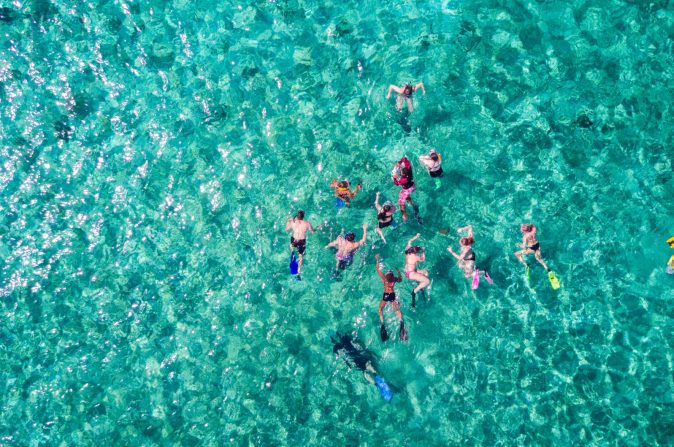Tourism / Maldives
The doors of paradise open for all
With an explosion in the number of guesthouses across the country, Maldivian beaches are becoming ever more accessible to visitors.

Tourists concentrate in diving spots in ever bigger numbers.
According to the Ministry of Tourism, at the end of 2018 there were 145 “one island one resort” type facilities operating nearly 32,000 beds in the Maldives, where there were none some 40 years ago. By the end of 2019, 14 new luxury islands will open their doors to the public, with international brands like Waldorf Astoria, Hilton or JW Marriott, joining other super luxury brands, like Cheval Blanc or the Four Seasons, in the Maldives tourism scene. Additional 140 resorts are expected to emerge in islands already leased for development in the coming years, and these are just in the high-end luxury segment. Hotels, guesthouses and safari vessels now account for over 13,000 beds, more than double the figures from 2013, a number expected to greatly increase in the coming years.
The enthusiasm is palpable in the industry. “This is the best period for the tourism industry in the last 5 years”, Akhmeem Abdul Razzaq, Managing Director at Maldives Getaways, a local tourism-focused PR company, assures us. This rapid growth in the number of tourism facilities coincides with the opening of the expanded Velana International Airport (VIA) in Malé, scheduled for 2023, with an increased capacity to handle up to 7.5 million passengers per year. In 2018, the Maldives registered 1.4 million visitors, but the government expects to reach the 2.5 million mark by as early as 2023. These are great news for a nation whose government budget is highly dependent on tourism to fund education, health, and any other developments.
Fresh opportunities
VIA is not the only airport being upgraded. Across the country, international and regional airports are also being revamped in the expectation the significant increase in visitors.
Historically, the Malé Atoll, where the main international airport is located, was the location of choice for most resort developers, and, at 45 resorts, it is by far the most exploited atoll in the country. Operators have always chosen to be as close as possible to the main airports and points of distribution, as long distances pose great logistic and transportation challenge. Outside Malé, it is in the neighboring atolls in the center of the country where most of the other resorts are located. That, however, seems to be changing. From the 14 resorts planned for 2019, five are in islands either to the very North or the very South of the country. The transport network revamp has opened substantial new opportunities for super-luxurious and exclusive resorts in nearly untouched paradise-like locations, and investors are taking them. This is the latest step in an incredible road paved by the Maldives, finding solutions to provide ultra-high luxury services and amenities in extremely remote locations.
There is a new tourist in town
It was not just the transportation sector that changed, but also the type of product the country offers. By and large, the Maldives is no longer a destination just for the super-rich. A new market for mid-range tourism has emerged with a visitor profile that seeks other type of attractions and price ranges. The backpacker segment has also found its place in the sun. Hundreds of guesthouses have now sprawled across the country’s many local islands. They offer the same snorkeling and fishing experiences found in resorts, coupled with a local Maldivian life experience, but charge as little as $30 per night. Guesthouses will soon account for more than half of the beds available
for tourists in the Maldives.
140 new resorts under development
+8.9% increase in tourist registered beds in 2018
+18.4% increase in tourist arrivals in the first 5 months of 2019
This expansion comes with growing pains, however. The local job market doesn’t have the capacity to respond to the rise in demand, and developers are hard pressed to find people to work at the numerous new facilities opening. Market competition is also increasing, with local resort owners now competing with high-end and highly-financed international groups, while facing the limitations of the country’s immature banking sector, with limited access to credit for financing new projects. Most importantly, this onslaught of people is increasing the pressure on the already strained environment. Visiting the Maldives and enjoying its pristine white and beaches might have finally become available to the masses, but without greater care, the beaches will not be pristine for long.
